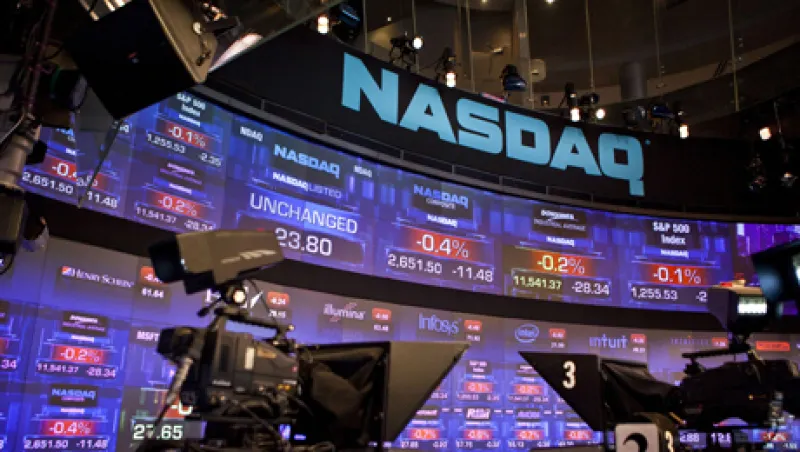When you’re No. 2 in ETF trading, you have to try harder.
Nasdaq, as the No. 2 marketplace for ETFs behind the New York Stock Exchange’s electronic platform, NYSE Arca, is known for putting more ideas “out there,” and right now, it’s got a proposal pending with the SEC for a new type of order for U.S. equity ETFs called an “iNAV Pegged Order.” If the SEC gives it the nod, it will be a first of its kind.
With U.S. equity ETFs, their iNAVs, or intraday net asset values, are automatically adjusted every 15 seconds based on the current market value of the stocks in their portfolios.
What the Nasdaq is proposing is that investors be allowed to put in orders “pegged” to a U.S. equity ETF’s most recent iNAV. “As the iNAV changes, so move the iNAV Pegged Orders,” the Nasdaq stated in its SEC filing, made on October 12. Nasdaq also noted “a Pegged Order may have a limit price beyond which the order shall not be executed.”
And the point of instituting this order type, Nasdaq said in its pitch to the SEC, is that “relative to the current intraday order entry/execution order types, the iNAV Pegged Order type would allow certainty of execution with a greater correlation to the ETF’s fair value for those seeking to invest on a more informed basis.”
“I think it’s a good idea,” says Michael Rawson, an ETF analyst at Morningstar in Chicago. “It’s like a limit order, but pegged to the current iNAV of a fund, and that makes sense,” he says.
But Dave Nadig, the director of research at IndexUniverse in San Francisco, sees a number of potential problems. “I think it’s got its heart in the right place, but the devil’s in the execution,” he says.
First of all, it applies only to the ETFs that are strictly invested in U.S. equities because those are the only ones where it’s possible to get an intraday NAV that is “close to being accurate,” he says. Therefore, the ETFs that hold some mix of U.S. and international stocks, or stocks and bonds, would be excluded, and that narrows the list of eligible ETFs to “a few hundred,” he notes.
Secondarily, most ETFs trade at a spread around iNAV, but not right at iNAV. If, say, the iNAV is 100, it’s very common for the ETF to be quoted at 99.90 to the seller or 100.10 to the buyer, he says. And Nadig notes, market makers will want to sell at iNAV plus 10 cents “because that’s how the market works; that’s how they make their money. He adds that the risk is that “you could miss your trade because you’re being very picky and want to get your ETF shares at iNAV.”
What’s more, Nadig says,”iNAV isn’t perfect.” He points out that there’s no way to keep iNAV from responding to any kind of bad data that gets fed into it, such as a “bad print” on one stock out of 50 in an ETF’s basket.
In its filing, Nasdaq said that “in the event that the iNAV data feed for a particular ETF were to be compromised or temporarily stopped being disseminated, the use of the iNAV Pegged Order type for that ETF would be suspended,” and orders already in the system “would be cancelled.”
But, “what if it doesn’t get cancelled in time, and it gets hit?” asks Stephen O’Grady, who was the partner in charge of ETF trading at Kellogg Capital Markets, before it was sold to Knight Capital Markets in October 2010. He is now a consultant based in Mountain Lakes, New Jersey.
O’Grady notes that if market makers “either buy or sell at iNAV, they cannot make any money.” That’s because market makers make their profits selling or buying above or below iNAV, and they then hedge their bets by buying or selling the underlying stocks.
“It’s the obligation of the exchanges to see that the public is getting treated fairly, but the problem is: What is the incentive for the market makers? They’re the ones who have the money at risk, not the exchange,” he says.
But, he also notes “most of the complaints about the ETF market are that market orders get screwed.” Once the market is open, “things can move very quickly,” he says. Under the current system, his advice is: “Don’t put market orders in, and if you do, be prepared to get a price you’re not happy with.”
So far, no comments have been filed, but the comment period is still open though tomorrow, November 8.






